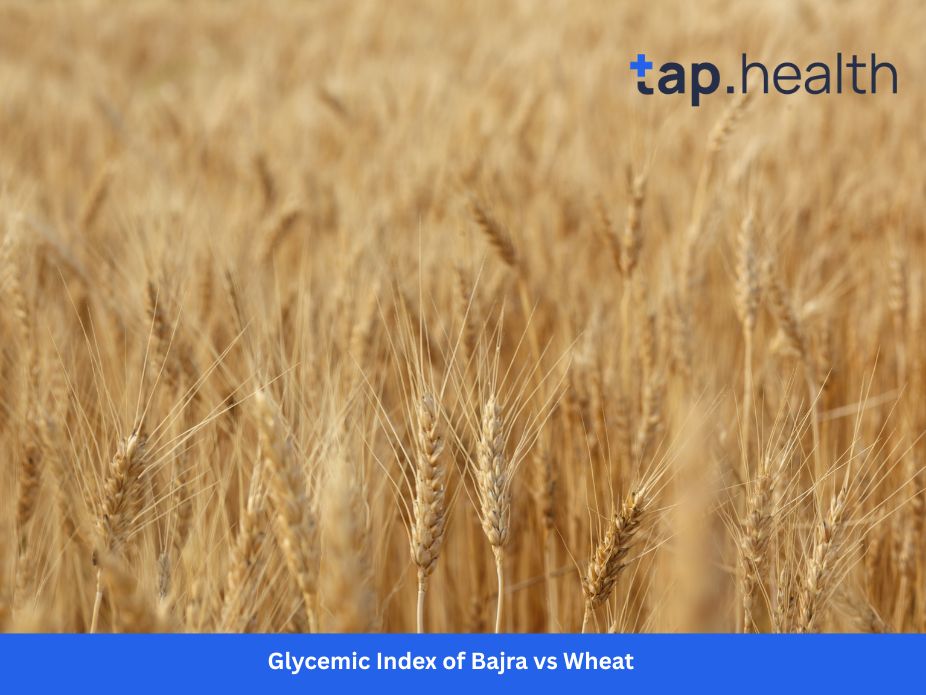Masoor dal, or red lentils, is a staple in many kitchens, especially in South Asia. Known for its rich taste, versatility, and health benefits, masoor dal is a popular choice for soups, stews, and curries. But for those managing diabetes or simply trying to eat healthier, one question that often arises is: What is the glycemic index of masoor dal, and how does it affect blood sugar levels?
In this blog, we will explore the glycemic index of masoor dal, its impact on blood sugar, the nutritional benefits it offers, and how it fits into a healthy diet. Whether you’re diabetic, looking to manage your weight, or simply want to eat better, this post will provide you with all the information you need to make informed dietary choices.
What is Glycemic Index (GI)?
Before diving into the specifics of masoor dal, it’s essential to understand the concept of glycemic index (GI). The glycemic index is a scale that measures how quickly foods containing carbohydrates raise blood sugar levels after consumption.
GI Categories:
- Low GI (55 or below): Foods that cause a gradual rise in blood sugar.
- Medium GI (56-69): Foods that cause a moderate increase in blood sugar.
- High GI (70 and above): Foods that cause a rapid spike in blood sugar.
The GI of a food plays a critical role in regulating blood sugar. Low-GI foods like masoor dal help maintain stable blood sugar levels, while high-GI foods can cause quick spikes, which may be harmful in the long run, especially for those with diabetes or those managing their weight.
Glycemic Index of Masoor Dal
Masoor dal is widely considered a low-GI food. The glycemic index of masoor dal is typically around 25 to 30, depending on how it is prepared. This is significantly lower than many carbohydrate-rich foods, such as white bread or potatoes, which have a much higher GI.
Why is Masoor Dal’s GI Low?
The low glycemic index of masoor dal is due to its high fiber content and protein. When you consume foods high in fiber and protein, the body digests them more slowly, causing a gradual increase in blood sugar instead of a sudden spike.
Masoor dal also contains complex carbohydrates, which take longer to break down and absorb. This slow digestion helps maintain steady energy levels throughout the day and is especially beneficial for individuals with diabetes or those aiming to control blood sugar.
How Does the Glycemic Index of Masoor Dal Affect Blood Sugar?
Because masoor dal has a low glycemic index, it is beneficial for people looking to maintain or regulate their blood sugar levels. The slow absorption of glucose from masoor dal leads to a gradual increase in blood sugar, which helps prevent blood sugar spikes and crashes that can occur when consuming high-GI foods.
Masoor Dal and Diabetes Management
For individuals with type 2 diabetes, low-GI foods like masoor dal are highly recommended. Including masoor dal in your meals can help:
- Stabilize blood sugar by preventing rapid glucose release.
- Improve insulin sensitivity, which is vital for managing diabetes effectively.
- Promote satiety and reduce cravings, making it easier to control overall food intake.
The Role of Fiber in Masoor Dal
The fiber content in masoor dal plays a key role in regulating blood sugar. Fiber slows down the absorption of sugars in the bloodstream, which helps maintain steady blood glucose levels. This is particularly helpful for managing diabetes and pre-diabetes.
Nutritional Benefits of Masoor Dal
Masoor dal is not just low in glycemic index; it also offers numerous nutritional benefits that make it an excellent food choice for overall health. Here’s a breakdown of the key nutrients in masoor dal:
1. High in Protein
Masoor dal is a great source of plant-based protein. A 100-gram serving of cooked masoor dal provides around 9 grams of protein. Protein is essential for:
- Building and repairing tissues
- Supporting immune function
- Maintaining muscle mass
This makes masoor dal an excellent protein source, especially for vegetarians and vegans.
2. Rich in Fiber
Masoor dal contains a significant amount of dietary fiber, with around 8 grams of fiber per 100 grams. Fiber is crucial for:
- Digestive health and regular bowel movements
- Blood sugar regulation by slowing the absorption of sugar
- Maintaining a healthy weight by promoting fullness
The fiber in masoor dal helps improve digestion and prevents constipation, while also reducing the risk of heart disease.
3. Packed with Essential Vitamins and Minerals
Masoor dal is a rich source of several vitamins and minerals that support overall health, including:
- Iron: Essential for red blood cell production and oxygen transport.
- Folate (Vitamin B9): Crucial for cell division and DNA synthesis, especially important for pregnant women.
- Magnesium: Supports muscle function, nerve function, and helps regulate blood sugar levels.
- Potassium: Helps maintain normal blood pressure and proper heart function.
4. Low in Fat
Masoor dal is naturally low in fat, with only about 0.4 grams of fat per 100 grams. Most of the fat in masoor dal is healthy unsaturated fat, which supports heart health by reducing bad cholesterol (LDL) and increasing good cholesterol (HDL).
5. Heart-Healthy
Due to its high fiber, protein, and low fat content, masoor dal is considered heart-healthy. Regular consumption of masoor dal may help lower cholesterol levels, reduce inflammation, and improve overall heart health.
How to Incorporate Masoor Dal into Your Diet
Masoor dal is incredibly versatile and can be used in a variety of dishes. Here are some simple ways to include masoor dal in your diet:
1. Masoor Dal Soup
A warm bowl of masoor dal soup is a comforting and nutritious meal. You can cook masoor dal with spices like cumin, turmeric, coriander, and garlic for added flavor. Pair it with a slice of whole-grain bread for a balanced meal.
2. Masoor Dal Curry
Masoor dal can be made into a delicious dal curry with tomatoes, onions, and spices. This dish can be served with brown rice or whole wheat roti for a fiber-rich, low-GI meal.
3. Masoor Dal Salad
For a light meal or snack, make a masoor dal salad by mixing cooked masoor dal with fresh vegetables like cucumber, tomatoes, and onions. Add a sprinkle of lemon juice and some herbs for extra flavor.
4. Masoor Dal Tikki
You can also make healthy masoor dal tikkis by combining cooked masoor dal with spices and herbs. These can be grilled or baked for a protein-packed snack or appetizer.
5. Masoor Dal Porridge
For breakfast, try making a masoor dal porridge by cooking it with oats and adding fruits and nuts for extra nutrients.
6. Masoor Dal as a Side Dish
Masoor dal can be served as a side dish with grilled vegetables, chicken, or fish for a well-rounded, nutritious meal.
FAQs About the Glycemic Index of Masoor Dal
1. What is the Glycemic Index of Masoor Dal?
The glycemic index of masoor dal is typically between 25 to 30, which is considered low. This means it has a slow and steady effect on blood sugar levels, making it a great option for diabetics.
2. Is Masoor Dal Good for Diabetics?
Yes, masoor dal is an excellent food for diabetics due to its low glycemic index. It helps maintain stable blood sugar levels and provides a good source of plant-based protein and fiber.
3. How Does Masoor Dal Affect Blood Sugar?
Masoor dal’s low glycemic index ensures that it causes a gradual rise in blood sugar rather than a rapid spike. The fiber and protein content of masoor dal help in regulating the absorption of glucose, making it ideal for blood sugar control.
4. Can I Eat Masoor Dal Every Day?
Yes, masoor dal can be eaten every day as part of a balanced diet. It’s rich in nutrients like protein, fiber, and essential minerals, making it a healthy addition to meals.
5. Is Masoor Dal a Good Source of Protein?
Yes, masoor dal is a great source of plant-based protein, providing about 9 grams of protein per 100 grams. It is especially beneficial for vegetarians and vegans who may need alternative protein sources.
6. How Should I Cook Masoor Dal for Maximum Health Benefits?
To maximize the health benefits of masoor dal, cook it with minimal oil and use spices like turmeric and ginger to enhance its anti-inflammatory properties. You can cook it with vegetables for added fiber and nutrients.
7. Can Masoor Dal Help with Weight Loss?
Yes, masoor dal can aid in weight loss due to its high fiber and protein content. It promotes satiety, reducing hunger and cravings, which can help control calorie intake.
Conclusion
Masoor dal is not only a delicious and versatile food but also an excellent choice for anyone looking to manage their blood sugar levels. With its low glycemic index, high fiber, and protein content, masoor dal helps stabilize blood sugar, improve digestion, and support overall health. Whether you’re diabetic, looking to lose weight, or simply trying to eat more healthily, masoor dal is a nutritious addition to your diet. Try it in soups, curries, salads, and more, and enjoy its many health benefits!



